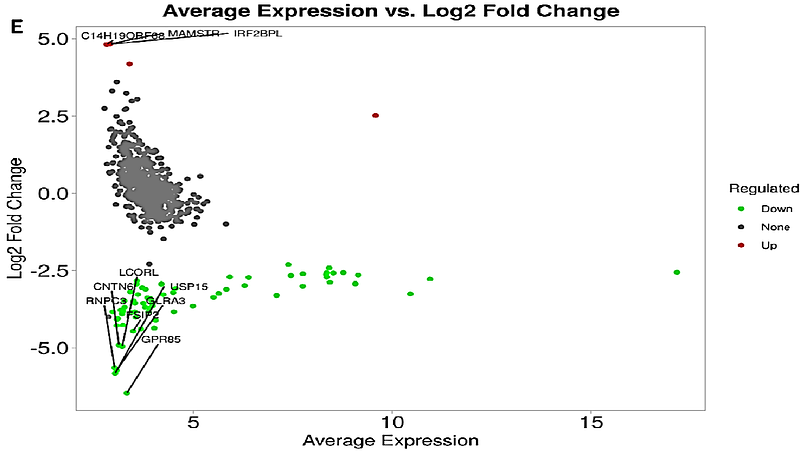Comparative Analysis of Ovarian Transcriptome Changes Across Gestational Stages in Kari Sheep

Comparative Analysis of Ovarian Transcriptome Changes Across Gestational Stages in Kari Sheep
ALI, H.; AHMAD, S.
AbstractThis study aimed to investigate the genetic determinants of gestation length in Kari sheep, employing RNA-Seq technology. Employing a comprehensive whole transcriptome analysis, we sought to pinpoint differentially expressed genes (DEGs) while also delving into gene ontology (GO) enrichment and Kyoto Encyclopedia of Genes and Genomes (KEGG) pathway assessments. The analysis revealed the identification of a total of 19,546 genes expressed in ovary. While comparing the transcriptomes of Kari sheep with Balkhi, yielding 976 DEGs (p < 0.05, Log2fc>1, <-1). Notably, among these DEGs, an upregulation of genes was observed associated with Ubiquitin-protein transferase activity, such as CNOT4, RC3H1, and XIAP. Concurrently, DEGs like NFAT5, EPAS1, ZNF644, RBPJ, and FOXP2 exhibited associations with RNA polymerase II core promoter proximal region sequence-specific DNA binding. Conversely, downregulated genes, including EEA1, CNOT4, FGD4, MBNL1, ZRANB2, REV3L, XIAP, ATP13A3, RPAP2, FOXP2, and ADAMTS6, were implicated in the mRNA surveillance pathway. In addition, several Gene Ontology terms, such as GO:0001228 (transcriptional activator activity) and GO:0004842, along with GO:0000978 (transcriptional activator activity), were linked to the DEGs. KEGG pathways, including \"Glycosaminoglycan biosynthesis - chondroitin sulfate/dermatan sulfate\" (KEGG:532) and \"basal cell carcinoma\" (KEGG:5217), were associated with our findings. Our principal component analysis (PCA) demonstrated a cohesive clustering of gene expression profiles among the four samples, with subtle distinctions. Protein-protein interaction (PPI) analysis indicated the functional relationships among the DEGs. Notably, genes such as ABHD16B and NPBWR2 exhibited strong co-expression among the down-regulated DEGs, while DNAH7/TBC1D31 and MBNL1/NOVA1 displayed prominent co-expression among the up-regulated DEGs. Consequently, our study offers a comprehensive understanding of Kari sheep genetics and the pivotal genes involved in gestation length determinants. These findings carry significant genetic implications, enhancing genetic resources, furthering reproductive biology comprehension, and contributing to the advancement of sustainable sheep farming practices.